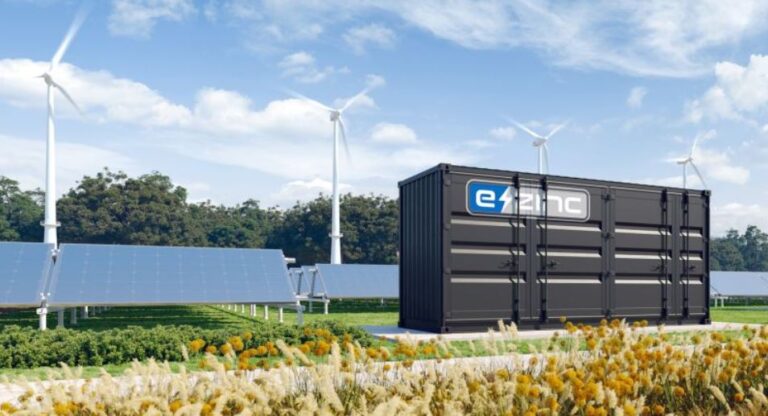Australian zinc bromide flow battery specialist Redflow has entered into a partnership with Queensland state-owned generation company Stanwell to collaborate on the development of a long-life non-lithium energy storage solution for use in a 400 MWh project. Meanwhile, Toronto-based energy storage specialist e-Zinc has secured $31 million to develop and complete its pilot manufacturing facility in Mississauga, Ontario.
From pv magazine ESS news place
Queensland-based battery company Redflow has signed a Memorandum of Understanding with state-owned energy company Stanwell to collaborate on the development and deployment of its next-generation zinc bromide flow battery for use in large-scale projects.
A feasibility study will conduct technical and commercial due diligence for an initial 5 MWh project using Redflow’s new X10 battery solution at Stanwell’s Future energy and innovation training hub is being built at the coal-fired Stanwell power station near Rockhampton in central Queensland.
The two parties plan to next deploy Redflow’s X10 battery for use in a large-scale 400 MWh project at a location yet to be revealed.
Redflow said the X10 is the “natural evolution” of its current zinc-bromine battery systems and is designed for larger-scale projects. The system uses the core stack technology developed for the company ZBM3 battery unity, but in a new form designed for large-scale deployment.
“Redflow has acquired the key chemicals and technology IP from the Pod200 and scaled and optimized this to deliver better performance, higher energy density and lower costs,” the company said, adding that the 150 kW / 725 kWh with the aim of increasing this to 200 kW / 1 MWh.
The feasibility study is expected to be completed later this year. If the results are positive, the first 5 MWh battery energy storage system is expected to be installed in the first half of 2025.
Stanwell Chief Executive Officer Michael (CEO) O’Rourke said the agreement and proposed projects with Redflow are part of the utility’s strategy to become a portfolio of renewable energy sources including 9-10 GW of generation and 5 GW of storage by 2035 to support the Queensland Government’s renewable energy goals.
“Stanwell has ambitious energy storage targets across our portfolio, and we see longer duration energy storage solutions like those from Redflow as critical to meeting our customers’ demand for sustainable solutions,” he said.
“We already have a number of battery storage projects in the pipeline, and this new partnership will ensure that the battery technologies deployed in the future are best suited to serve our communities and customers through our renewable transformation.”
Redflow CEO and Managing Director Tim Harris said the research with Stanwell is being conducted in parallel with the company’s own feasibility study into establishing a battery manufacturing facility in Queensland.
Popular content
Redflow, which currently produces its batteries at a factory in Thailand, has explored the feasibility of setting up one factory on home soil in response to increasing demand for its technology in Australia and key global markets such as the United States.
Harris said the agreement with Stanwell could serve as a potential anchor order for the planned factory, which is scheduled to launch in 2026.
“This announcement reinforces the incredibly critical role that energy storage, and more specifically long-term energy storage, will play in Australia becoming a renewable energy superpower,” he said.
Redflow’s ambition is in line with the Queensland And Australian governments’ individual battery strategies, which aim to boost the country’s battery industry and create jobs.
e-Zinc’s shot in the arm
Toronto-based e-Zinc has secured $31 million, which will go toward the development and completion of its 450,000-square-foot pilot manufacturing facility in Mississauga, Ontario.
The new funding comes on top of a previous $25 million Series A funding round raised in April 2022.
To read further, visit our ESS news website.
This content is copyrighted and may not be reused. If you would like to collaborate with us and reuse some of our content, please contact: editors@pv-magazine.com.


